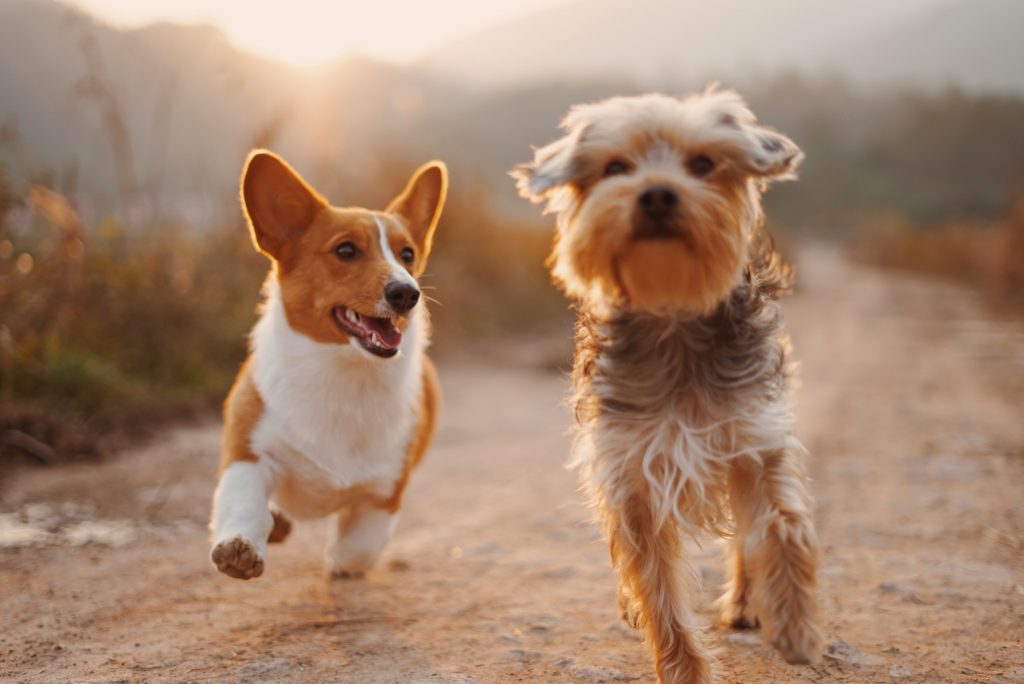
Bonding
Dogs are highly social animals by nature and they love to be in groups of people and animals alike. Socialization, however, goes much further than just playing around at the park. This is particularly true when it comes to rescue dogs. The purpose of socializing rescue dog is to ensure they are comfortable and well-adjusted in all manner of situations with your family and friends.
Their Unique History
The key time frame for dog socialization is between three and 16 weeks old for most dogs. This is when most dog owners will take the time and patience to socialize their puppies in many different scenarios and slowly introduce them to other dogs near them as well as closer family members. For rescues, this can be challenging depending on their individual past. Each one may come with unknown anxieties or fears, and a rescue dog will need to be carefully introduced to various experiences and situations much slower than other dogs would be.
Sometimes rescues may be more liable to know their backgrounds and previous living situations. Many of them, however, likely do not as they take so many dogs from so many different places, sometimes around the world. Dogs that would be used to roaming the countryside may not appreciate living in an apartment, and long for the freedom of big fields and open skies. Rural dogs may need a lot of time to acclimate to the sounds and smells of urban living. Likewise, city dogs will need to learn the rules of the countryside, and get used to farm animals or wildlife.
Some of these dogs may have had negative experiences with previous owners or animals near them which may cause them to act out. This behaviour may be perceived as aggression but it is really just their natural reaction of being scared, or a way of defending itself. If your dog does have some of these behaviours such as barking excessively or lunging, or growls and snarls, then you may want to consult a behaviour specialist to help with socialization techniques. Hesitant dogs do not mean they will be defensive necessarily because most rescues need some time simply to acclimate to their new environment, so be sure to take it slowly and gradually build up your dog’s confidence.
Watch Their Habits
When introducing your rescue dog to your world, don’t rush them to do what you want them to do. It’s important to let the dog set the pace. The key to understanding your dog is getting to know their habits, which includes their signals. The way they hold themselves or react to stimuli is their way of communicating any fears or discomfort they may have. There are several signs that they may be anxious or uncomfortable which may include these:
- Tucked tail
- Flattened ears
- Lip licking or nose licking (typically done a few times in a row)
- Shaking
- Crouched body
- Attempting to dart or hide
- Whining
- Raised hair on their back
Don’t Push Them Too Fast
Take your cues from your dog, rather than the other way around. While it is important to make sure they know you’re the leader, you shouldn’t make a rescue feel that you don’t care for their comfort levels in situations. Putting your new rescue into situations before they are ready is likely to backfire. They will likely shut down or becoming overly stimulated, or they may experience negatively associate with whatever it was you were trying to introduce them to. Move slowly, graduating from easy to more challenging situations and exposures over time. A relaxed dog is able to learn better and faster than one who is stressed or with heightened anxiety.
Positive Reinforcement is Key
Positivity is the best motivator with dogs. Many studies have shown time and time again that praise, love and treats are the most effective ways to encourage good behaviour. At first you should keep your encounters with other dogs brief, and if your dog seems comfortable, allow him to sniff and then move on, praising him once you’ve passed by. The longer you hang around another dog, the more likely it is that one (or both) of the dogs will become overstimulated. It is very important during these brief interactions that you are calm yourself, as many dogs can sense your state of mind and will react accordingly. If your dog is having a hard time adjusting to their new life, try to soothe rather than scold and be incredibly patient if possible. Some dogs will adjust very quickly, while others will take some time. If needed talk to your vet about some behavioural training as it’s a good investment







